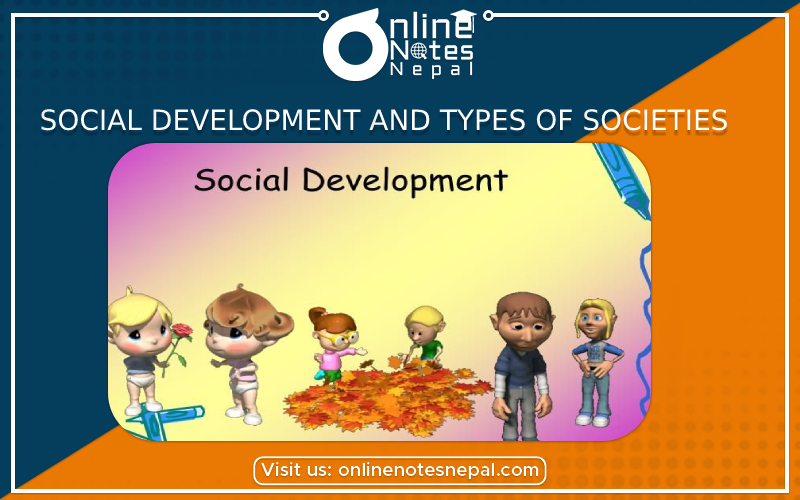Published by: Mandira
Published date: 13 Jan 2022

Society
The word society is derived from the Latin word ' society' which refers to describe or interaction between parties that are friendly. It is a group of people involved in a continuous social interaction or a large group of people sharing the same geographical or social territory. Societies are often explained as patterns of social relationships between individuals who share particular culture and institutions.
A society also refers to the people in general, living together in organized communities with shared laws, traditions, and values. It is a community or group of people having common traditions, institutions, and interests. Societies are described as the sum total of such relationship among members of the society. Such relation of the people directs them towards achieving the common goal. Therefore, society is togetherness of friends or broadly people and their mutual relationship.
Characteristics of a Society
The basic characteristics of a society are listed below:
Relationship between Human and Society:
Society is the result of togetherness of people, their relations and support to each other for their existence. A human cannot survive without society and societies cannot exist without members. Still there may be conflicts between the individual and society. One can imagine that social systems function better when they have considerable control over their individual members. Society is no more possible without people and people have no existence without it. It is very clear that relation between individual and society are very close.
Development
Development is the process of having positive changes in any part or an event constituting a new stage in a changing situation. The process of adding improvements to a parcel of land, such as grading, sud-divisions drainage, access, roads, utilities. For instance- constructing road, bridge, producing capable manpower etc.
The positive changes on social events, process and structure indicate green signals for development. In other words, the newness that comes to anything or anywhere positively is development.
Development is also the process of adding improvements to a parcel of land, such as grading, sud-divisions drainage, access, roads, utilities. It is a continuous process, which is not something that starts and stops but goes without a pause.
Social Development
Social development is about putting people at the center of development. This means development processes need to benefit people, particularly not only the poor but also a recognition of people. Social Development is the universal practice. It goes at its own speed. It's all about the process of transformation. It's better for the people to gear up the development process in an organised and systematic way to prosperity. It is the way they interact in groups and society, and the norms that facilitate such interaction, shape development processes.
Society is the aggregate of people living together in a more or less ordered community. Society is a group of people involved in social interaction or a large group of people sharing the same geographical or social territory. We have discussed about a society, its characteristics, social development in the previous lesson. Now, let's discuss the types of Societies. The Societies are broadly classified on the basis of level of development, inequality, urbanization, level and political organization.
There have been six types of societies throughout history:
Hunting and gathering Societies
The members survive primarily by hunting, trapping, fishing, and gathering edible plants. A majority of the members' time is spent looking for and gathering food. They spend most of their time for looking and gathering food. A hunting and gathering society has following characteristics:
Pastoral society
Unlike hunting and gathering societies, pastoral societies only have to move when the land in which the animals graze is no longer usable. Pastoral societies also allow for job specialization, since not everyone is needed to gather or hunt for food. For example, while some people breed animals, others are able to produce tools or clothing, which allows for specialization in these areas.
Some major characteristics of this type of Society are:
Such society exists even today in Middle East, Africa, Tibet, Middle Asia and Northern part of Nepal.
Horticulture Society
These societies rely on the cultivation of fruits, vegetables, and plants in order to survive. Horticultural societies are often forced to relocate when the resources of the land are depleted or when the water supplies decrease.The technological advances led to an increase in food supplies, an increase in population, and the development of trade centers.
Some characteristics of horticulture society are:
Agriculture society
In agricultural society, Increases in food supplies then led to larger populations than in earlier communities. The society where people get survived by carrying out agriculture activities is agriculture society.
Some characteristics of agriculture society are as follows:
Industrial Society
The society in which people are involved in producing different sort of products, either for survival or business is called industrial society. Industrialization brought about changes in almost every aspect of society. As factories became the center of work, “home cottages” as the usual workplace became less prevalent, as did the family's role in providing vocational training and education.
Some characteristics of this society are as follows: